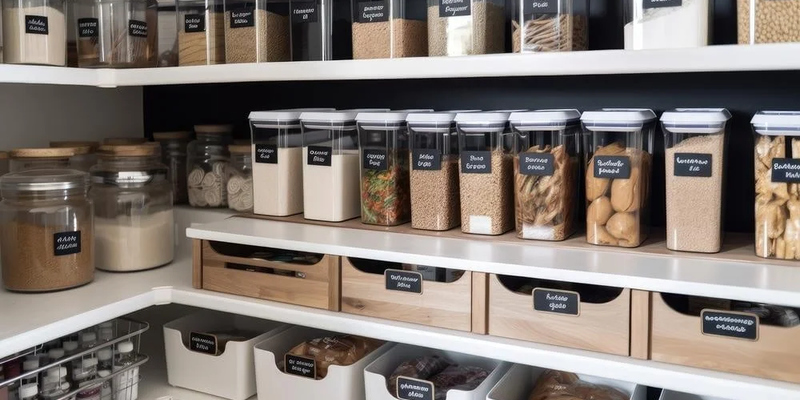Advertisement
Jan 01, 2000 By Sana

Thai green curry is a popular dish loved around the world. Its mix of herbs and spices creates a delicious smell and taste that many people enjoy. But sometimes, making this dish at home can be tricky.
The curry pastes you buy in stores often don't give good results. When you use these pastes to make curry at home, your curry might not look and taste like the one you get in a restaurant. Instead, it might look pale and tasteless.
Want to cook this dish at home that will taste like restaurant curry? Here is a step-by-step guide on how to prepare Thai green curry from scratch. Follow these few easy steps, and you will be making restaurant-style curry in no time.
So get your aprons on, and let's start making!
Essential Ingredients for an Authentic Thai Green Curry

Now, we'll discuss the secrets of Thai green curry, starting with the ingredients. All of them have a specific function of contributing to that harmonious combination of tastes.
- Green Curry Paste: It's the spicy sensation of raw green chili, garlic, lemongrass, and other condiments used in Thai cuisine.
- Coconut Milk: This adds creaminess, counters the spiciness of the curry, and gives it a creamy texture.
- Chicken: Most people like to add it to their green curry. But if you are a vegetarian, you can replace it with tofu; if you are a seafood lover, you can add some shrimp to it.
- Thai Eggplant: These little guys are all about absorbing all the flavors of the curry. You can also use Regular eggplant.
- Kaffir Lime Leaves: These include one that gives a citrusy twist to the soda. You can also attempt some lime zest instead.
- Fish Sauce: This packs a punch of umami. It might smell strong, but don't skip it! If you're vegetarian, try soy sauce as a substitute.
- Palm Sugar: This adds a touch of sweetness to balance out the heat. Brown sugar works, too, if palm sugar is hard to come by.
- Fresh Basil: A handful of these leaves at the end gives your curry a fresh, aromatic finish. Thai basil is best, but regular basil will do just fine.
Step-by-Step Guide to Crafting Authentic Thai Green Curry
Alright, let's roll up your sleeves and start making Thai green curry. Don't worry if you've never made it before; we'll walk you through each step. By the end of this, you'll be whipping up a curry that'll make your taste buds dance.
Ready to get cooking? Let's go!
1. Prepare the Ingredients
First, let's get everything ready. Grab your chicken and slice it into bite-sized pieces. Chop up those veggieseggplant, bell peppers, whatever you fancy.
Measure out your curry paste, coconut milk, and spices. Having everything prepped and within reach makes the cooking process smooth sailing. It's like setting up your mise en place, as the fancy chefs say.
Trust me, this little bit of prep work saves a ton of hassle later.
2. Heat the Oil and Curry Paste
Now, let's get that pan nice and hot. Splash in some oil and let it shimmer. Then, drop in your green curry paste. As it hits the hot oil, you'll hear that satisfying sizzle. Give it a good stir and let it fry for a minute or two.
This step is crucial. It wakes up all those lovely flavors in the paste. You'll start to smell the aromatic herbs and spices. It's like a little preview of the deliciousness to come!
3. Add Coconut Milk and Simmer
Time to add the creamy goodness. Pour in your coconut milk, but do it gradually. Start with about half, stirring as you go. Let it simmer gently, stirring it now and then.
This is where the magic starts to happen. The coconut milk and curry paste are getting to know each other, creating that signature Thai flavor. Keep an eye on it and stir regularly to prevent any curdling. Patience is key here!
4. Add Chicken and Vegetables
Now for the main event. Toss in your chicken pieces and watch as they start to turn white in the fragrant sauce. Let them cook for a few minutes before adding your veggies.
This way, the chicken gets a head start, ensuring it's fully cooked by the end. When you add the veggies, they'll soak up all that curry goodness while staying crisp-tender. It's all about timing to get everything just right.

5. Season with Fish Sauce and Sugar
This is to ensure that the fish does not break apart while being grilled. Pour a little fish sauce and sprinkle a little palm sugar into the mixing bowl.
Begin with a small amount; you can always increase it later. But as you are grilling, make sure that you are sampling the food to get the right taste: salty, sweet, and slightly sour.
This is what makes Thai food have many layers of taste that intermingle to give the perfect taste. Change the proportions until it satisfies the taste buds.
6. Simmer Until Cooked
Let all cool slowly and simmer. You want the chicken to be done all the way through and the sauce to get thicker. This generally takes about 15-20 minutes, but let your senses be your guide.
If you find that the sauce is getting too thick, do not panic. You can add more coconut milk or water to thin it down. Is the smell pervading your kitchen at the moment? That's the smell of success!
7. Add Kaffir Lime Leaves and Basil
Crush 3-4 kaffir lime leaves and add it to the pan. Next, take a fistful of fresh basil leaves. Do not cut them; instead, tear them, and this will release more of the oils of the herbs you are using.
Add these shortly before they are ready to be served. This adds the final touch of spiciness and the uniqueness of Thai cuisine. Your kitchen should smell absolutely amazing by now, don't you think?
8. Serve with Steamed Rice
It's time to serve your creation! Ladle that steaming, fragrant curry into bowls. Serve it alongside a mound of fluffy jasmine rice. It's the perfect canvas for soaking up all that delicious sauce.
For an extra touch, sprinkle some fresh basil leaves on top. Not only does it look great, but it also adds an extra pop of flavor.
9. Enjoy Your Homemade Thai Green Curry
This is the moment you've been waiting for. Dig in! Take a moment to appreciate the rich colors and enticing aroma. Each spoonful should be a perfect balance of creamy, spicy, and aromatic flavors.
Pat yourself on the back - you've just made an authentic Thai green curry from scratch! Why not complete your Thai feast with a cold Thai iced tea or a refreshing cucumber salad on the side?
Conclusion
Now it's your turn to shine in the kitchen! Grab those ingredients and give it a go. Trust me, the smell alone will make your mouth water. And once you taste that first spoonful? Pure bliss.
Why not make it a fun weekend project? Invite some friends over and cook together. Or surprise your family with a Thai-inspired dinner night.
Did you try it? How did it turn out? We'd love to hear about your curry adventures! Comment below and share your experience. Your stories might inspire others to don their aprons and get cooking, too.
Frequently Asked Questions
Q: Can I use store-bought green curry paste?
Ans: Absolutely! While homemade paste is great, a good-quality store-bought version works well, too. Just check the ingredients and opt for one with natural components. It's a real time-saver without compromising much on taste.
Q: What vegetables work well in green curry?
Ans: Thai eggplant, bell peppers, and bamboo shoots are classic choices. But don't be afraid to experiment! Zucchini, green beans, or even sweet potatoes can add interesting flavors and textures. Use what's in season or your favorites.
Q: How can I adjust the spiciness of the curry?
Ans: The heat mainly comes from the curry paste. Start with less paste for a milder curry, and add more to turn up the heat. You can also add sliced fresh chili peppers for an extra kick or coconut milk to cool things down.
Q: Is there a vegetarian version of this curry?
Ans: Definitely! Swap the chicken for firm tofu or a mix of vegetables. Use soy sauce instead of fish sauce for seasoning. You can also add chickpeas or lentils for extra protein. It's just as delicious!
-

10 Genius Tips to Organize Your Pantry for Hassle-Free Meal Prep
Jan 01, 2000
-

Why Fusion Cuisine Is The Highlight Of 2024 Dining Trends
Sep 09, 2024
-

The Ultimate Guide to Cooking Thai Green Curry at Home
Jan 01, 2000
-

Why Yuzu Is The New Citrus Star In Global Cuisine
Sep 09, 2024
-

6 Smart Tips for Planning a Week of Healthy Meals
Jan 01, 2000
-

Why Fancy Cookies Are The Affordable Treat Of The Year
Sep 09, 2024
-

5 Best Ways to Store Fresh Herbs and Keep Them Fresh Longer
Jan 01, 2000
-

4 Simple Tricks to Avoid Soggy Pie Crusts Every Time
Aug 13, 2024
-

5 Tricks to Add Creaminess to Your Dairy-Free Dishes
Aug 19, 2024
-

7 Secrets to Making the Perfect Greek Moussaka
Aug 19, 2024
-

What Makes Botana Sauces And Chili Oils 2024’s Hottest Condiments?
Sep 09, 2024
-

7 Proven Techniques to Prevent Cheesecake Cracks for a Smooth Finish
Aug 13, 2024
-

6 Secrets to Make Your Bread Rise Perfectly
Jan 01, 2000
-

5 Tips for Making Creamy and Delicious Hot Chocolate
Aug 19, 2024